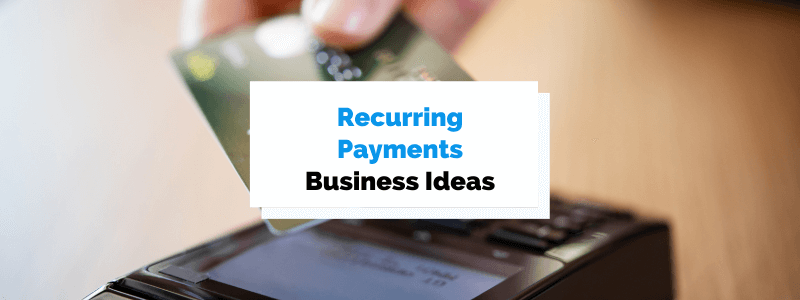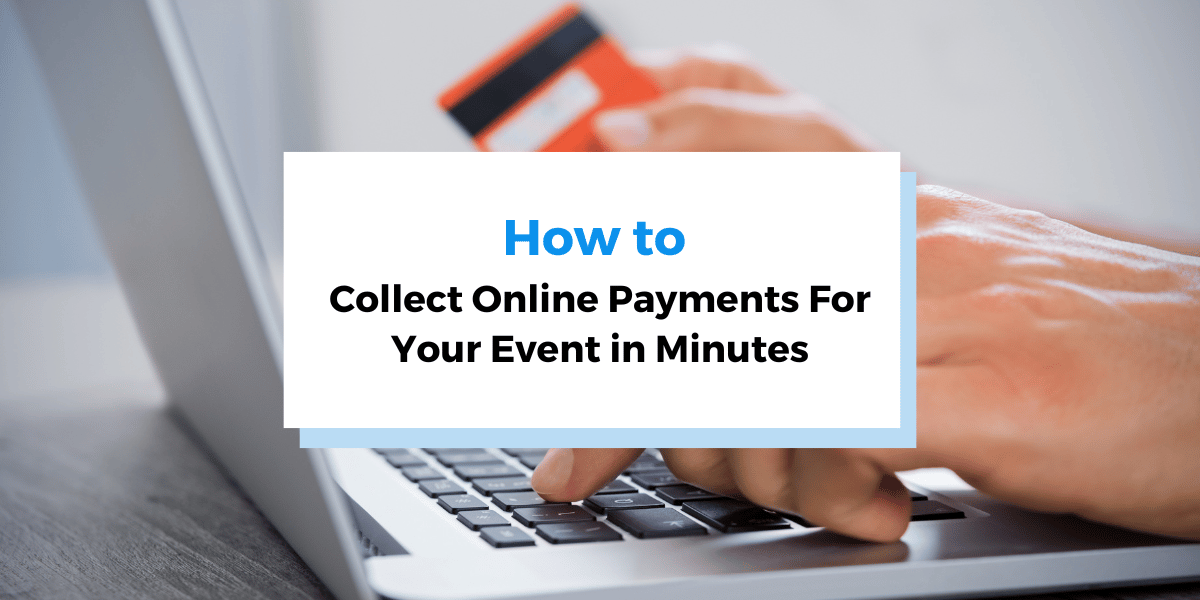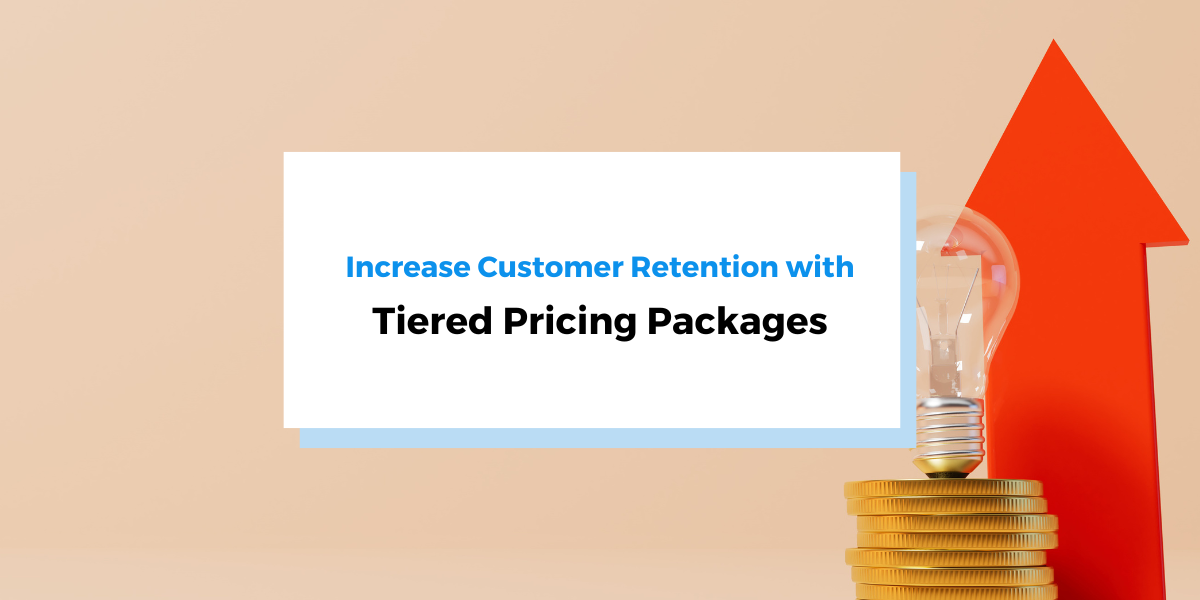Recurring payments are the monthly salaries of running a business. They’re predictable, and they provide your company with stability and financial health.
If you told your future in-laws that your business was using the recurring payments model, they’d nod in approval and offer to pour you another glass of wine.
So, if you want to gain their respect and reap all the other benefits recurring payments can bring, it’s essential to learn how to implement them.
Whether you’re starting a new business or already running one, there are several techniques you can use to start bringing in those recurring payments.
Today we’ll cover eight.
Launch a Membership Program
A membership program is a website where you provide premium content, community forums, advice, and even one-on-one consulting to your members, who pay a regular fee for access.
It’s sort of like running an online club. Members pay monthly or annual dues, and you give them ongoing benefits.
For example, Income School offers a membership site called Project 24 for people who want to learn how to make money blogging.
Below is a list of what members get:

Source: Income School
It comes with several step-by-step courses and access to their members-only podcast, community forums, and live virtual mastermind sessions.
In a time when loneliness and isolation are on the rise, people are searching for communities to join where they can meet with people who have shared interests and goals.
You can capitalize on that need by starting a membership site that speaks to the interests of your target audience.
Sell Subscriptions to Products
When a customer subscribes to a physical product, they pay a recurring fee and receive a new product at some regular interval. There might also be services tacked on.
For example, customers who subscribe to Remi Night Guards receive not only a new replacement guard every six months, but also free impressions after dental work and other useful services.
Remi’s strategy is to capture recurring revenue. As you can see below, they market the subscription as the better option compared to a one-time purchase:
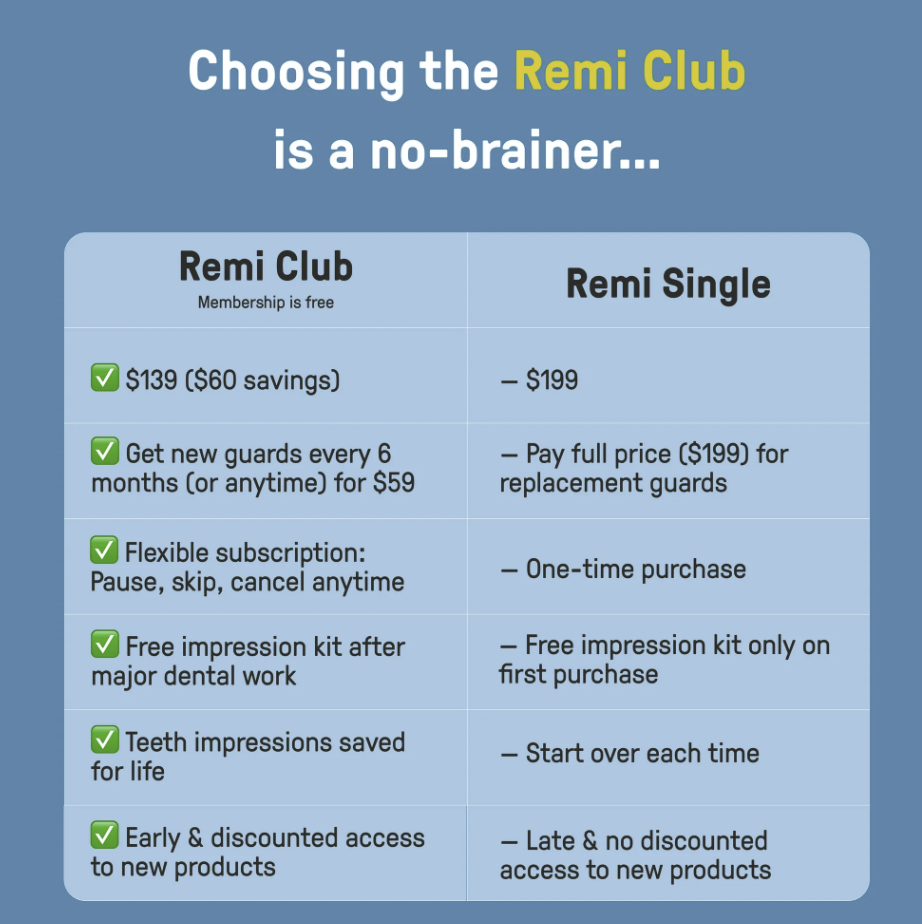
Source: Remi
As you can see, this method is great if you sell products that need to be replaced or replenished on a regular basis.
Some other examples are food and drink items, running shoes, beauty products, and even toothpaste.
It also works great if you offer a type of good but change the specific item every month, as the Sock of the Month Club does with their sock subscription packages:
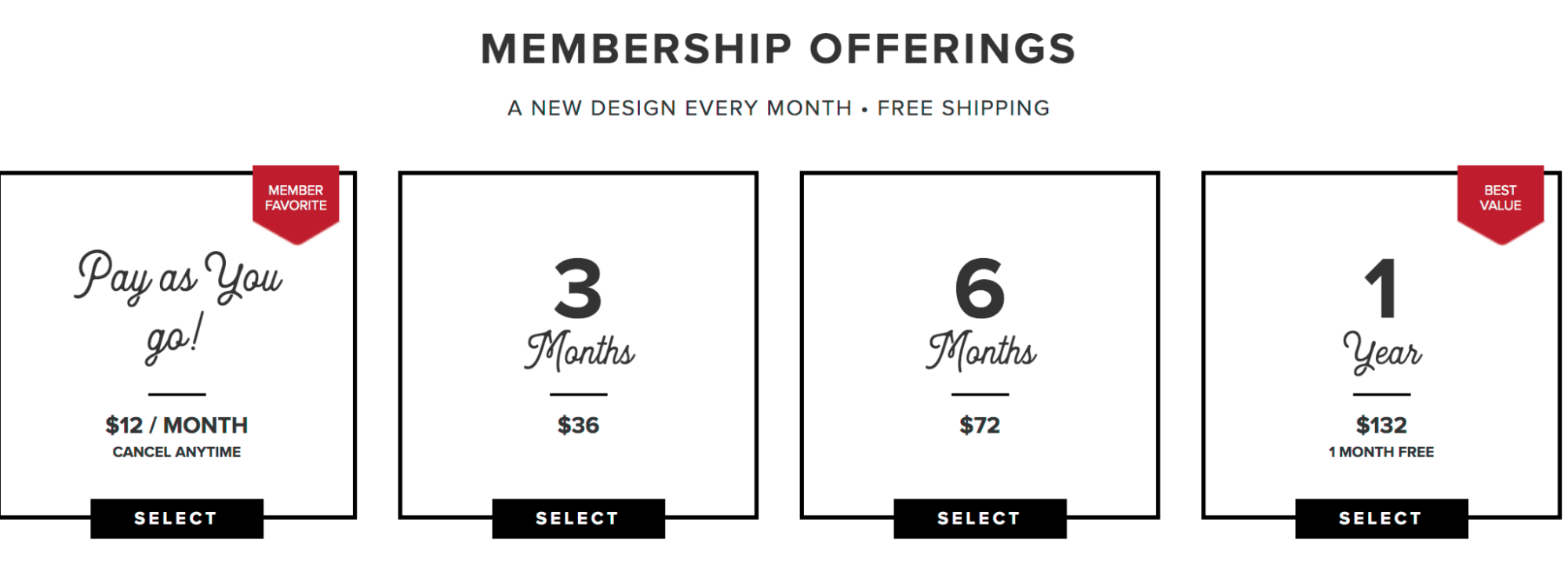
Source: Sock Club
Every month, customers receive a different pair of socks. They look forward to it because they know that the socks are going to have an interesting pattern and be well-made.
Not running a product-based business? That’s okay.
Service-based businesses can also utilize this model by creating an offering that helps their target audience.
For example, a running trainer might offer a subscription to some special recovery drink they created.
Send Out Subscription Boxes
Subscription boxes seem to be all the rage. From aged wines to fancy foreign snacks, and even stylist-made clothing sets, almost any product theme can be turned into a box subscription.
For example, check out this subscription box by Birchbox Man:
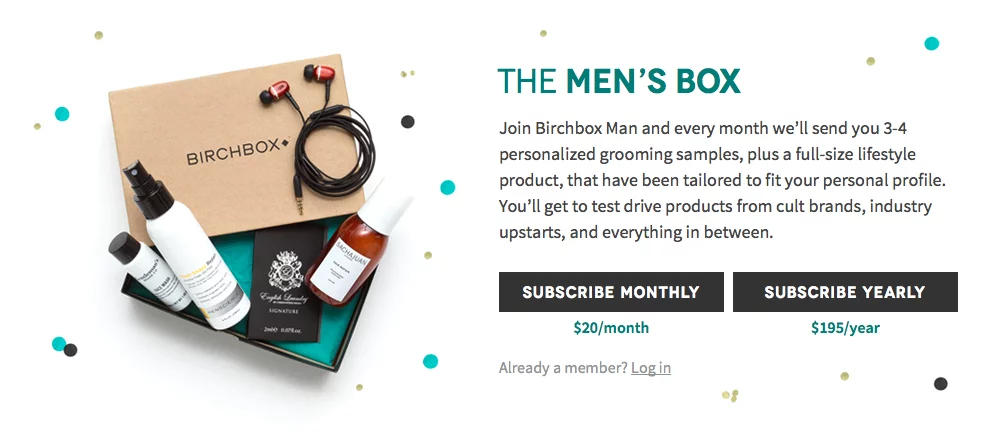
Source: Subbly
In this recurring payments business model, customers subscribe to receive a box of goods at recurring intervals—usually once per month.
And they’re charged monthly or annually for this luxury.
Many companies make their users take an online quiz to learn their preferences, like in the example below:
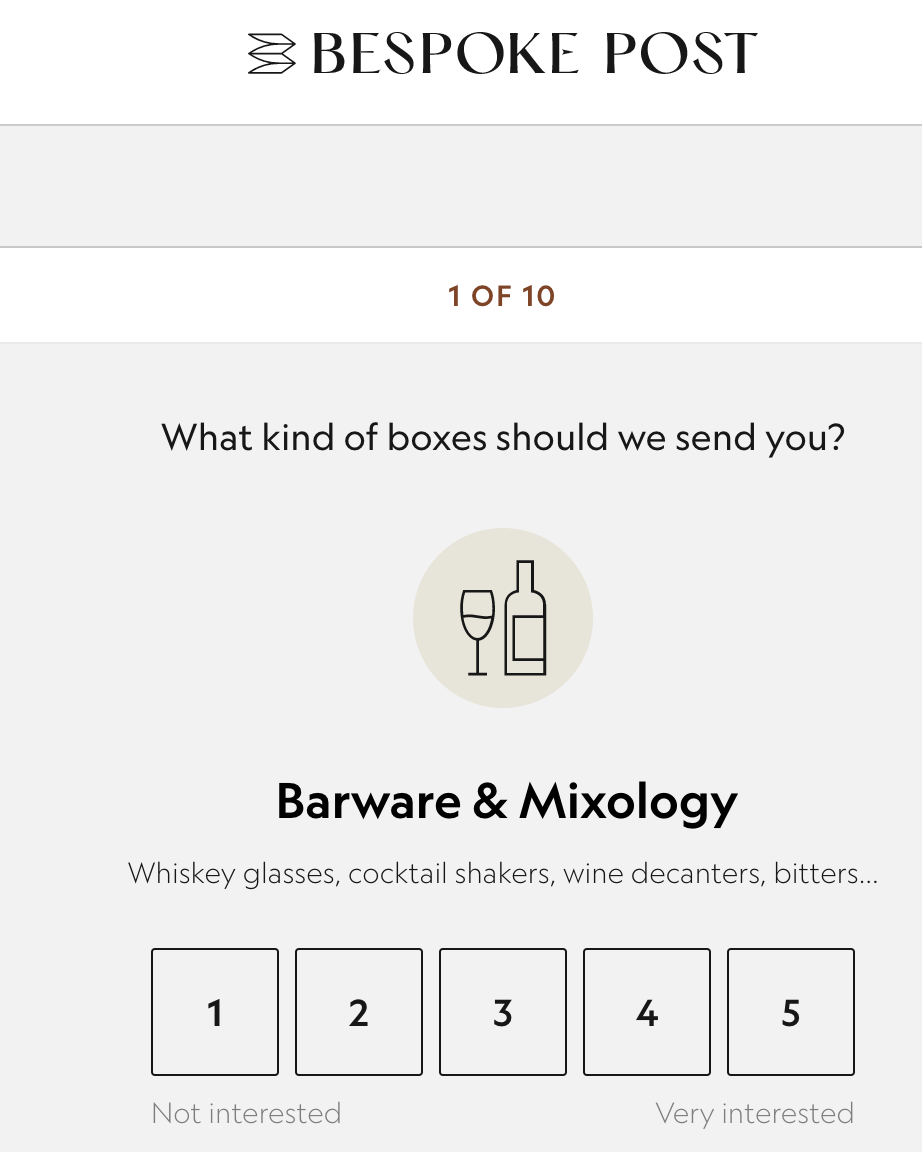
Source: Bespoke Post
Still, the customer has no idea what specific items they’ll receive in their monthly box. That’s where the magic comes in. There are elements of anticipation and surprise.
The subscriber may know that they’re going to receive four wine bottles. Maybe they even know it’s two reds and two whites because that’s what they put in the quiz.
But they don’t know which brands they’ll be. This makes opening the box and trying each wine so much fun. It’s almost like their own private tasting at home.
See if there’s some theme that’s related to your business that you can build a subscription box around. It’s a great way to capture recurring revenue and build a loyal fanbase.
Offer Exclusive Access to Digital Downloads
Digital downloads like e-books or templates are excellent for businesses because they’re easy to create, require no inventory, and have the potential for passive income.
And if you sell not just a single digital download, but ongoing access to a whole set of them, you also get the benefits of recurring payments.
Allows us to explain.
Look at Unsplash. It offers stock photos and images that you can download for a set free. But some, often the best ones, are off-limits. Only the members can download them.
If you go with the subscription option, you get access to these more exclusive, higher-quality images as well as unlimited royalty-free downloads.
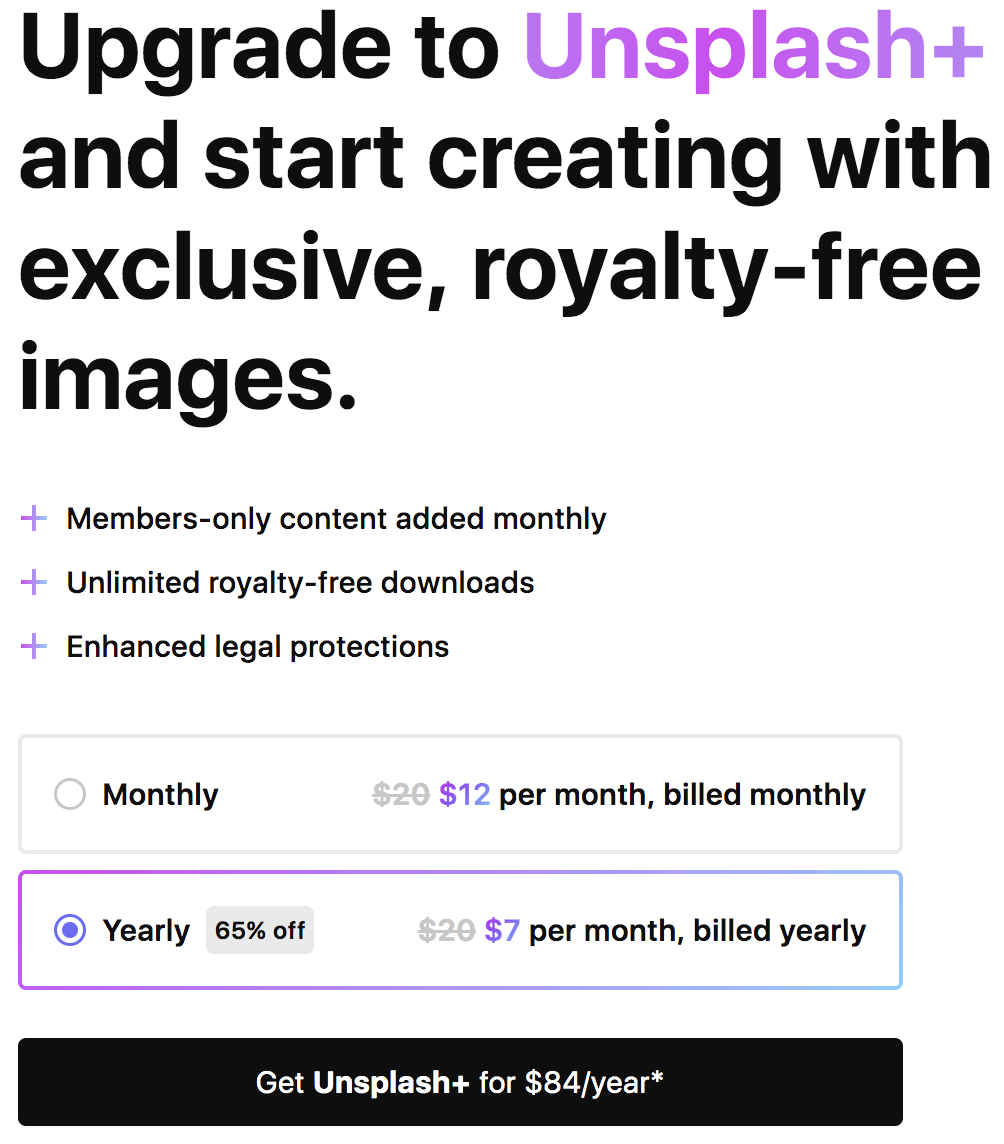
Source: Unsplash
Users can choose to pay monthly or annually. For anyone relying on high-quality stock images for their designs and websites, this is a no-brainer.
Think about what digital downloads you could create and then gate behind a monthly subscription.
E-books and courses are common ones. Templates or print-outs are even easier to create.
To illustrate, an after-school math program could repurpose their lesson plans and turn them into print-out math games and puzzles that parents can access for a monthly fee.
Pro Tip: To persuade people to pay for that ongoing access, offer a few of your digital downloads for free on your website to show prospects that your digital products are high-quality.
Exclusive digital products are a great way to showcase your know-how.
Provide Subscriptions to Services
If you sell a service that your clients need on an ongoing basis, say once per week, consider selling subscriptions to this service.
Some examples of services that people commonly subscribe to are insurance, utilities, and apartment leasing.
But smaller businesses across many sectors also use this method to sell their services.
For example, a tutoring business might give parents the option to subscribe for $500 per month to receive one hour-long tutoring session per week for their child.
Another example is an after-school program that charges $1000 per month for 20 after-school sessions.
Your business could even offer customers the option to sign up for autopay.
This way, after registering for the subscription and submitting their billing information, the client doesn’t have to do anything else.
If you want to make registering for services online easy for your customers, consider using Regpack’s payment processing software.
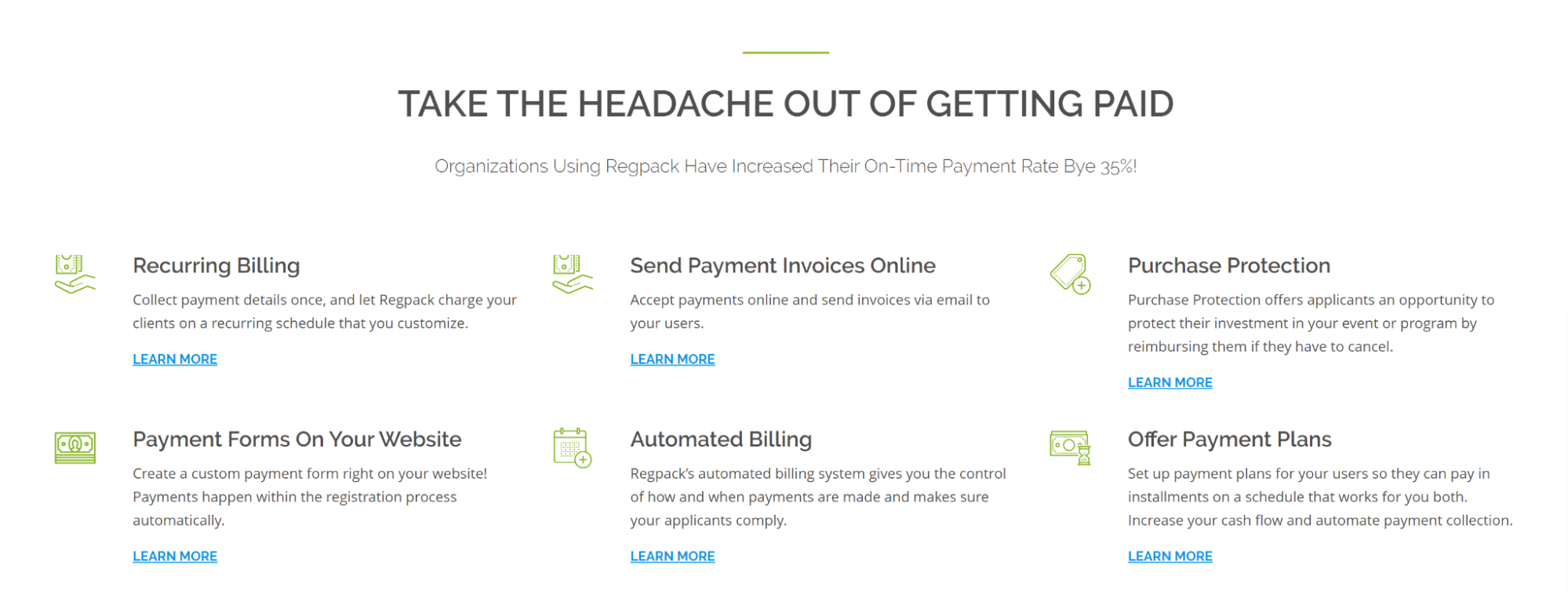
Source: Regpack
It allows you to build and embed online registration forms, and makes it a whole lot easier to manage your recurring payments.
In sum, selling your services as subscriptions helps you capture the benefits of recurring payments, like predictable revenue, higher retention, and long-term customers.
Devise Online Courses
Online courses have become a go-to method for businesses looking to bring in recurring payments. Why?
Because they’re cheap to make, in demand, and great for establishing your brand as an expert in its industry.
If there’s something your audience wants to learn, consider creating a course about that topic and offering it to them for purchase.
Usually, these courses are a mixture of a few elements:
|
Short instructional videos |
| End-of-section quizzes or exams |
| Assigned readings and exercises |
There are plenty of online course platforms that make it easy to create and offer these courses to your customers.
For example, Thinkific helps you build your course with its templates and drag-and-drop editor:
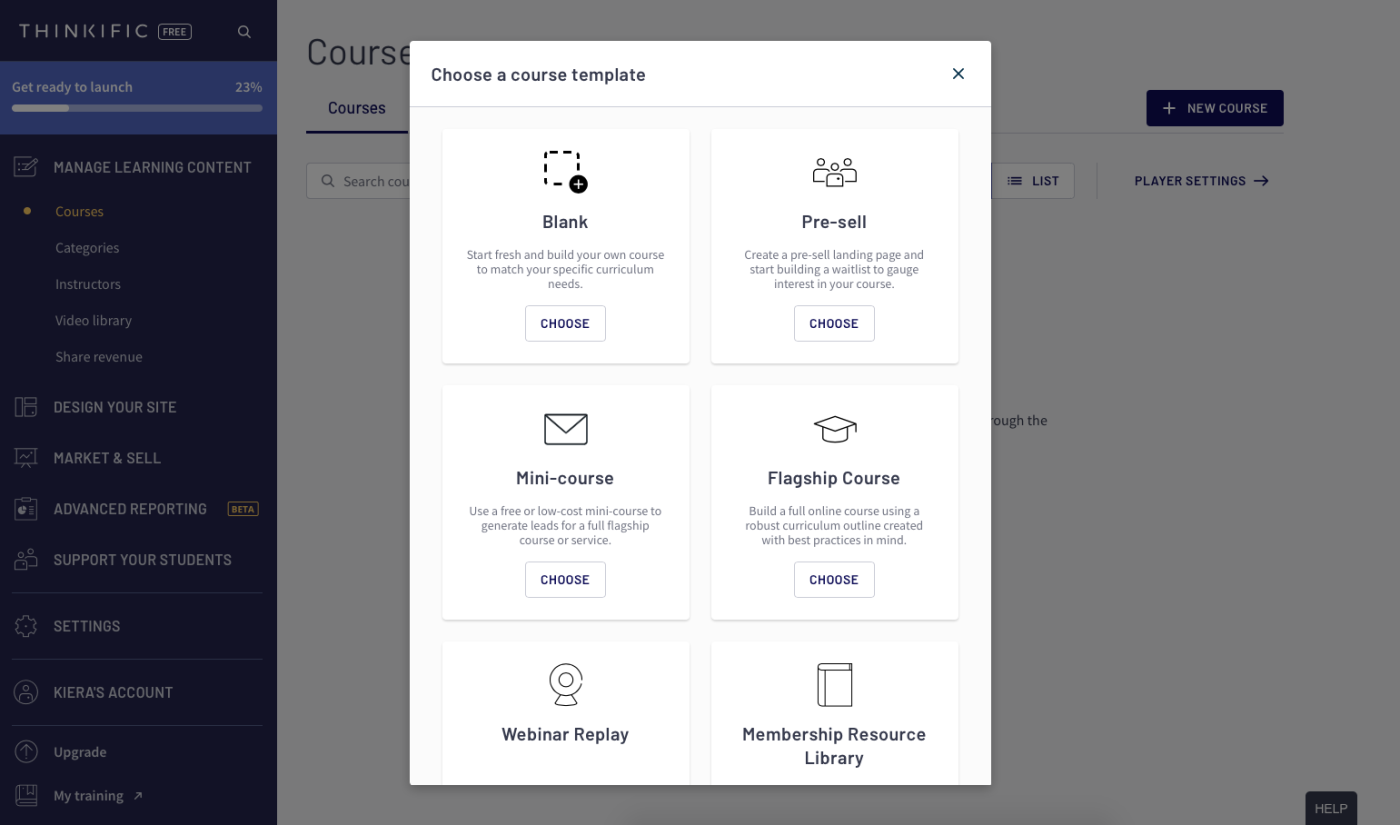
Source: Zapier
The beauty of online courses is that they have a high potential for passive revenue. After you create your course, customers can buy and use them without needing your support.
Sure, some course creators might offer one-on-one time or live sessions, but you don’t have to—although, that would be a smooth way to build trust with your buyers.
Sell Software as a Service
Software as a service, or SaaS, is a business model in which a business creates a software platform and allows people to use it at the cost of a subscription—typically monthly or annually.
Because it’s hosted via cloud computing, users can sign into the software from their desktops or mobile devices.
Customers also typically get access to other services like customer support and troubleshooting, making the experience much more cost-efficient and convenient than buying and maintaining in-house software.
Plus, this model secures recurring revenue for the seller.
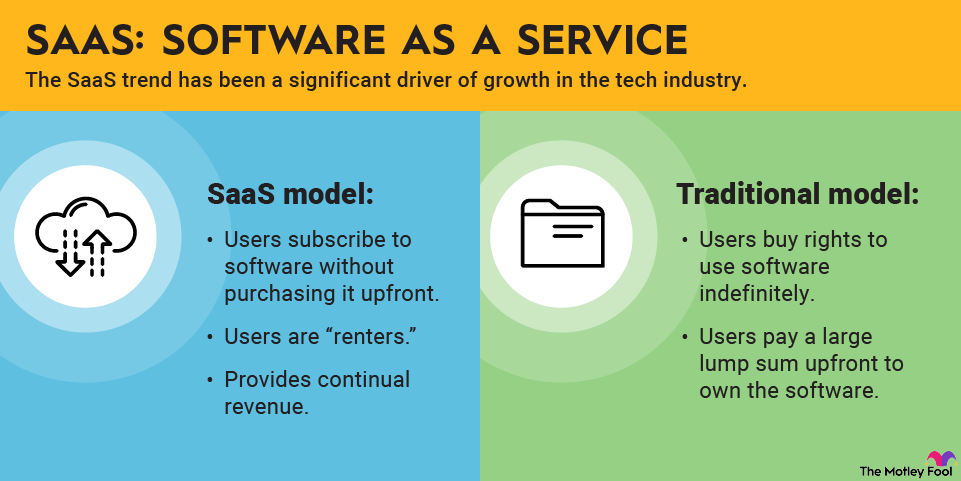
Source: The Motley Fool
If you have a software idea, consider offering it to customers as a service so that you reap the many benefits of recurring payments.
Create a Retainer Plan
A retainer plan is when you promise a certain number of hours or deliverables to a client per week in return for the client’s recurring payment, or, in some cases, for an advance.
One example of a business type that uses these are freelance writers. They try to create retainer plans with clients as a way to secure recurring payments and predictable income.
For instance, a writer might agree to do four blog posts for a client per month over the next six months, with intentions to renew this agreement when it ends.
To make billing easier, they might standardize their service, offering each blog post at the same rate.
This way, if each post is $400, the writer knows that they’re bringing in $1600 of revenue each month for the next six months.
Retainers are also popular among other service-based businesses, including legal professionals, consultants, web developers, and accountants.
Conclusion
Whether you’re starting a business or already managing one, there are plenty of creative ways to bring in recurring payments, from creating online courses to selling subscriptions to products and services.
Simply including one in your offerings will allow you to enjoy the predictable cash flow and revenue that attends the recurring payment model.
That is, as long as you follow the rules of success…
Check out the do’s and don’ts of recurring payments to learn the best practices and common pitfalls of execution when it comes to this business model.


